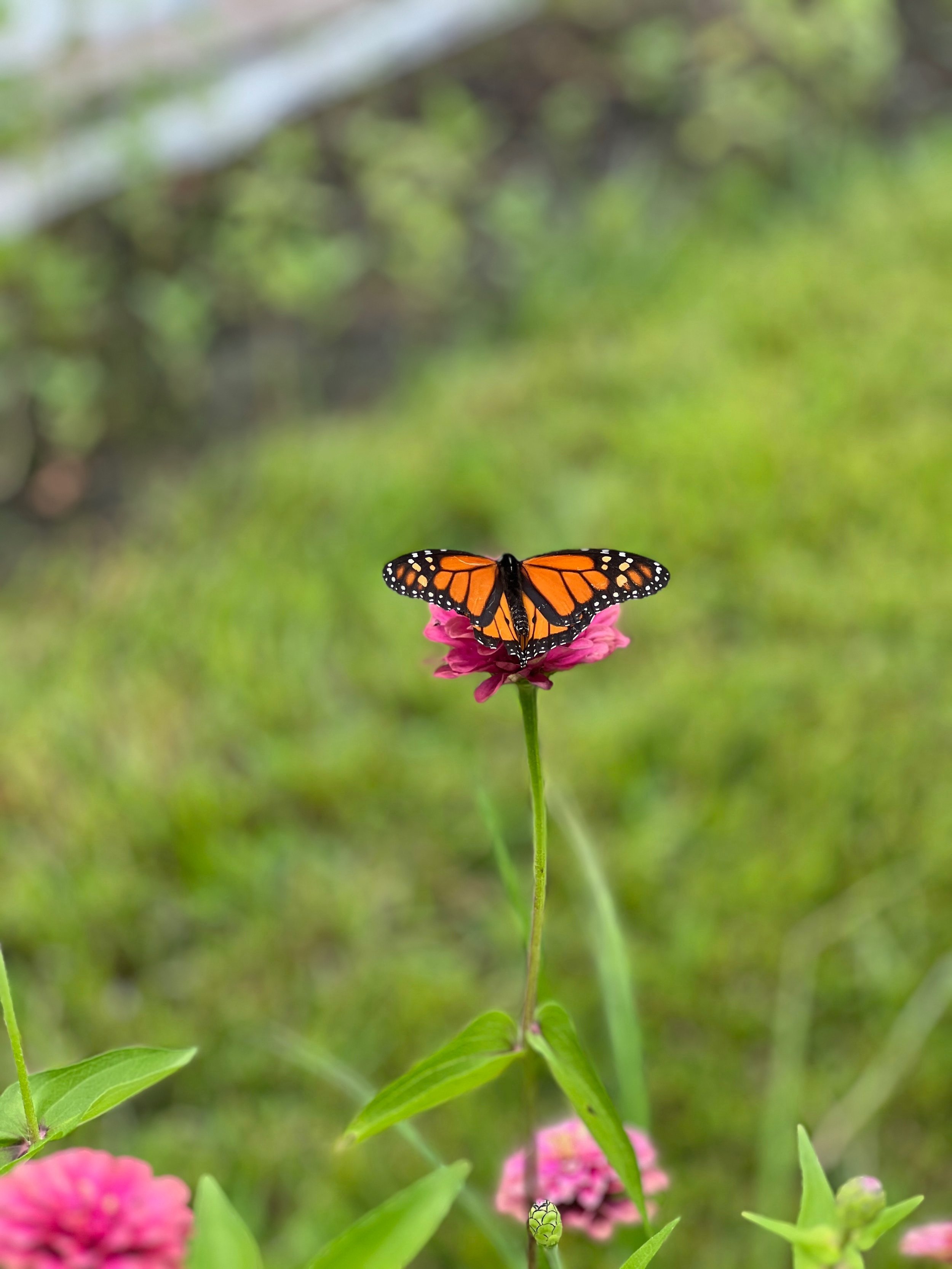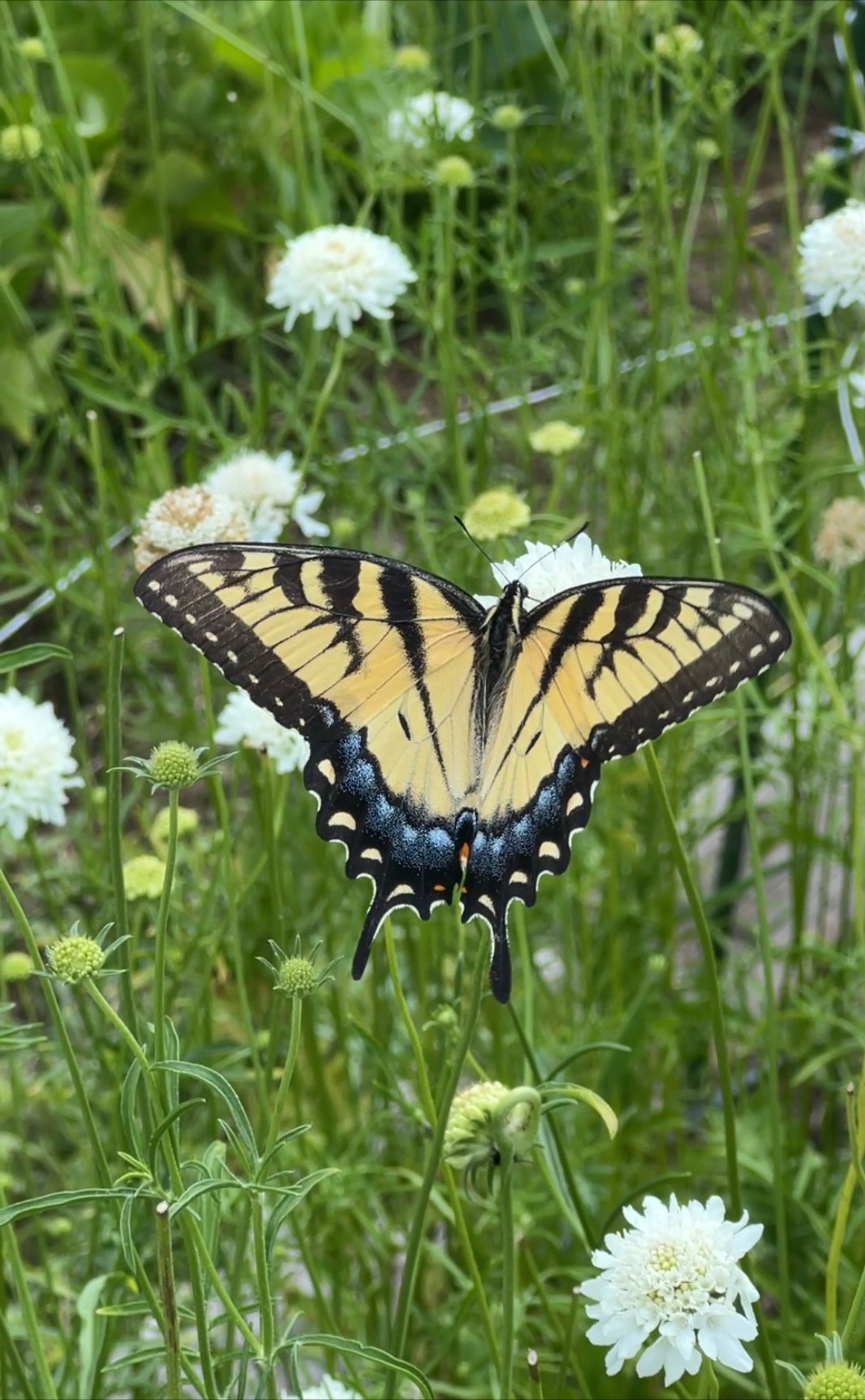Hope Amidst the Native Plants
Rudbeckia hirta (black-eyed Susan) with frost
“Hope” is the thing with feathers -
That perches in the soul -
And sings the tune without the words -
And never stops - at all -
~ Emily Dickinson
When I was finishing many of the fall chores last week, I found myself talking to myself and starting many of those sentences with the words, I hope: I hope the ground doesn’t freeze before I get the ranunculus in the ground; I hope the covering for the low tunnel arrives before the baby plants freeze, I hope there can be world peace.
Hope, it seems, is a muscle that I need to practice. In a world with so much to be discouraged about, it is easy to drift into helplessness and hopelessness. One of my favorite writers, Margaret Renkl, recently said, “when the macrocosm is hard to bear, focusing in on the microcosm usually helps.” It is true for me.
Sherbert palette of summer
I definitely find hope in the microcosm. When I run into young adults who pay attention and make their voices heard, I feel hope. When I hear from or am involved with a local group who advocates and takes action for change on the local level, I feel hope.
Finally, when I work in my field–broadforking the beds, adding gypsum to improve the calcium levels in the soil, and sprinkling the feather meal that will serve as a fertilizer next spring–I’m filled with hope for the flowers that will come in May. I can imagine the spring sapphire blues and sandy yellows, and the later summer sherbert palette of tangerine, peach, cream, and coral. Even more tantalizing than imaging the flowers is imagining the monarchs and swallowtails, the hoverflies and bumble bees, that will be sampling the summer bounty. At that moment I feel hope. It lifts my spirits and reminds me that my hope is fostered through action.
Up close with deer
Over the past six weeks there has been a lot of action on the farm. I’ve planted tulips, gathered leaves, and planted hundreds of shrubs that will provide foliage for my bouquets. Because more than half of the shrubs I planted are natives, they will be crucial to the bird and insect life on my farm. These creatures have co-evolved with native plants, which are often singularly able to provide the food and habitat they need.
My native plantings included chokecherry, beautyberry, diervilla, viburnum, ninebark, hydrangea, and sweetspire. Planting natives and tending to my home landscape and flower field is a powerful antidote to the hopelessness that comes when I read news of the wars on this globe or experience another reminder of climate change. The act of creating more native habitat, a small effort toward promoting biodiversity, fills me with hope, (as long as I don’t think too much about the invasives that are gaining ground on other parts of the farm.)
While planting natives is seemingly a small act, it is one that is harder to accomplish than it should be. Most of my natives are within my deer fence because deer in my area take a toll on native plants. Even if you have a way to keep the deer away, finding native plants is not always easy. They are not the common currency of the big box store so a local nursery is going to be much more help.
If you are in the market for deer-proof natives shrubs, I have successfully grown viburnum, baptisia, sweetspire, and beautyberry in my unfenced landscape, which has no shortage of browsing deer. These particular natives even my voracious deer seem to leave alone and are a great place to start if you are in the market for natives but face deer pressure.
Slowly but surely I’m putting the field to bed and turning my attention to preparing for next season when I plan to have so many locally-grown flowers for our community. First on my “to do” list is improving the functionality of my website so local visitors to the site can purchase subscriptions and custom bouquets online. I’m also planning a few flower pop-ups at local businesses. There is always a lot of uncertainty about how field-grown plants will survive the winter, but I’m hopeful come May, I will have many flowers to offer my customers and a thriving ecosystem of bugs and birds in my fields.








